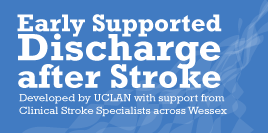 |
Anatomy and physiology related to stroke |
What is a stroke?
The brain requires a continuous supply of blood in order to function. A stroke occurs when there is a sudden or partial blockage or rupture of a blood vessel. The blockage or rupture of the blood vessel that carries oxygen, glucose and other nutrients to the brain, causes a rapid decrease in blood flow. Therefore, oxygen and glucose become unavailable. This disrupts the normal function of brain cells, causing chemical reactions within these cells. The affected cells release toxic chemicals and die. The release of these toxic chemicals causes the death of other cells, and this cascade continues.
There are two main types of stroke:
- Ischaemic stroke - 80-85% of all strokes are caused by an ischaemic infarction
-
An ischaemic stroke is the result of a sudden blockage in an artery leading to part of the brain. Some arteries contain plaque, which may have accumulated over a number of years. This plaque can cause narrowing of the arteries preventing the flow of blood. A blood clot in an artery, which has already been narrowed by plaque, may block that artery entirely. This will prevent blood reaching a particular part of the brain.
-
- Primary Intracerebral Haemorrhage (PICH) - 10-15% of all strokes are caused by a PICH
-
A PICH occurs when a blood vessel ruptures, bleeding into the surrounding brain tissue. The pressure on adjacent brain tissue from the sudden outflow of blood, along with a deficit in blood supply, causes rapid and severe damage. A PICH is more likely to involve a loss of consciousness, altered breathing patterns, and death in the acute stage, compared with an ischaemic stroke.
-
However, all types of stroke are potentially serious or even fatal and require emergency treatment.
 |
 |
 |